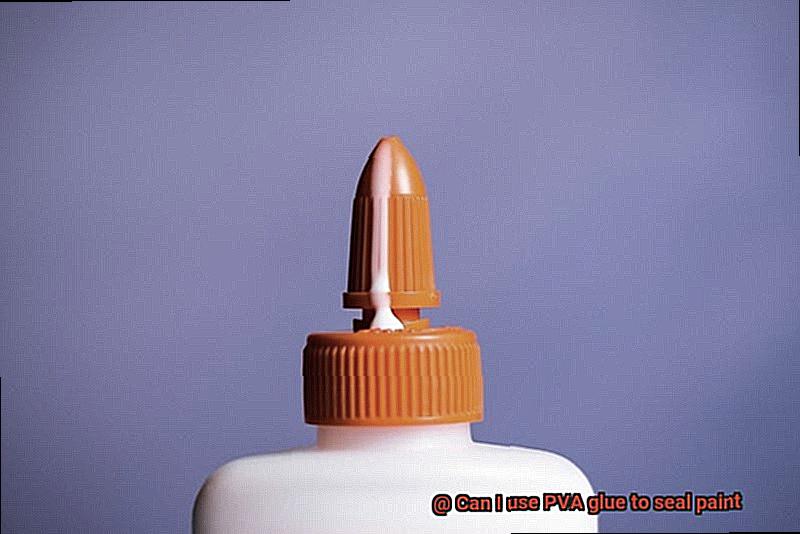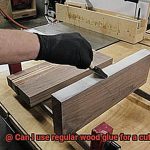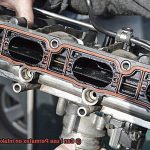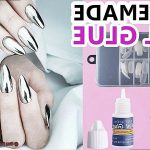Are your paintings constantly getting smudged or ruined?
Want to find a budget-friendly way to protect and preserve your artwork? Well, look no further.
Today, we’re diving into the world of using PVA glue to seal paint. That’s right – a humble glue that can work wonders in making your masterpieces last longer.
Get ready to revolutionize your artistic expression with this affordable solution.
How Does PVA Glue Work?
Contents
- 1 How Does PVA Glue Work?
- 2 Can PVA Glue Be Used to Seal Paint?
- 3 Considerations Before Using PVA Glue as a Sealer
- 4 Steps for Applying PVA Glue as a Sealer
- 5 When Is PVA Glue Not Suitable for Sealing Paint?
- 6 Advantages of Using PVA Glue as a Sealer
- 7 Disadvantages of Using PVA Glue as a Sealer
- 8 Alternatives to PVA Glue for Sealing Paint
- 9 Conclusion
PVA glue, also known as polyvinyl acetate glue, is an adhesive powerhouse that finds its way into a vast array of applications, from crafts to woodworking to construction. But how does this sticky substance work its magic? Let’s dive into the world of PVA glue and uncover its secrets.
At its core, PVA glue is a water-based adhesive made up of polyvinyl acetate polymers dispersed in water. When you apply the glue to a surface, the water content begins to evaporate, leaving behind a thin layer of sticky polymer. This layer acts as a bond between two surfaces, creating a connection that is strong and durable.
The secret behind the adhesive properties of PVA glue lies in the formation of hydrogen bonds between the polymer chains. These bonds occur when hydrogen atoms in one molecule are drawn towards electronegative atoms, like oxygen or nitrogen, in another molecule. In the case of PVA glue, the hydroxyl groups (-OH) on the polymer chains form these hydrogen bonds with various surfaces, allowing them to adhere effectively.
PVA glue truly shines when it comes to bonding porous materials such as wood, paper, and fabric. It seeps into the microscopic pores of these materials and establishes multiple points of contact between the adhesive and the surface. This creates an unbreakable bond that withstands the test of time, making PVA glue a go-to choice for woodworking projects, delicate paper crafts, and even fabric repairs.
But PVA glue isn’t just versatile in terms of materials it can bond – it also boasts other desirable qualities. It dries clear and flexible, ensuring that your projects maintain their aesthetic appeal without any unsightly residue or rigidity. Its water-based nature means it’s non-toxic and safe to use in most scenarios.
However, PVA glue does have its limitations. It struggles to adhere strongly to non-porous surfaces like glass or metal, as it can’t form the necessary bonds. Additionally, its resistance to moisture may not be sufficient for applications that require high strength or protection against water damage.
When using PVA glue, be sure to take safety precautions. While it’s generally safe and non-toxic, it’s best to avoid contact with your eyes and skin to prevent any potential irritation. Using it in a well-ventilated area is also crucial since the fumes can be potent.
Can PVA Glue Be Used to Seal Paint?
PVA glue, also known as polyvinyl acetate glue, is a popular adhesive commonly used for various crafts and DIY projects. Its water-based formula and clear drying properties make it a versatile option for many applications. But can PVA glue be used to seal paint?
The answer is yes, but with some important considerations. PVA glue can be used as a sealant for paint in certain circumstances. To determine whether it’s suitable for your project, there are a few factors to keep in mind.
Firstly, it’s crucial to consider the type of paint you are working with. PVA glue is generally compatible with water-based paints such as acrylics and latex. These types of paints bond well with PVA glue and allow it to create a strong seal. On the other hand, oil-based paints may not adhere properly to PVA glue, so it’s best to avoid using it as a sealant in these cases.
Secondly, consider the surface you are applying the PVA glue on. PVA glue is ideal for sealing porous surfaces like wood, cardboard, or paper. It penetrates the pores of these materials and forms a strong bond. However, it may not adhere well to non-porous surfaces such as glass or metal. In such cases, it’s better to use specialized sealants or varnishes designed for those surfaces.
When using PVA glue to seal paint, it’s important to apply a thin and even layer. This can be done using a brush or sponge applicator. Allow the glue to dry completely before subjecting it to any stress or moisture.
However, it’s important to note that while PVA glue can provide some level of protection for painted surfaces, it may not be as durable or long-lasting as other specialized sealants. If you require a more robust and long-lasting seal, it’s advisable to use specific paint sealers or varnishes that are designed for that purpose. These products offer better resistance against UV rays, moisture, and general wear and tear.
Considerations Before Using PVA Glue as a Sealer
PVA glue, also known as polyvinyl acetate glue, is a versatile adhesive that has gained popularity for its ability to bond various materials. When it comes to sealing painted surfaces, PVA glue can be a viable option. However, before diving into the world of PVA glue as a sealer, there are some important considerations to keep in mind.
First and foremost, the type of paint on your surface is crucial. PVA glue works well with water-based paints like acrylic or latex, but it may not be compatible with oil-based paints. Oil-based paints require specialized sealers that are formulated to work with their composition. Using PVA glue with oil-based paints could lead to adhesion issues and an ineffective seal.
Additionally, the condition of the painted surface plays a significant role in the success of using PVA glue as a sealer. If the paint is flaking, peeling, or in poor condition, the glue may not adhere properly and provide a strong seal. It is essential to ensure that the paint is in good condition and properly adhered before attempting to seal it with PVA glue.
Moreover, consider the intended use of the sealed surface. PVA glue works well for sealing painted surfaces that will not be exposed to excessive moisture, heat, or wear and tear. If your surface will face these elements regularly, it may be necessary to opt for a more durable and specialized sealer that can withstand such conditions.
While PVA glue can offer some level of protection and sealing for painted surfaces, it may not provide the same durability and longevity as dedicated sealers or varnishes. If you require a long-lasting and robust seal for your painted surface, it might be more appropriate to invest in a product specifically designed for this purpose.
Before applying PVA glue as a sealer, always conduct compatibility testing on a small, inconspicuous area. This will help determine if the glue adheres well to the surface, provides the desired level of sealing, and avoids any adverse effects such as discoloration or damage to the paint.
Furthermore, bear in mind that PVA glue can dry with a slightly glossy or matte finish, depending on the brand and formulation. This may impact the overall appearance of the sealed surface. Thus, it is crucial to consider whether this finish aligns with your desired aesthetic before using PVA glue as a sealer.
Steps for Applying PVA Glue as a Sealer
You’ve got your paint project all done, and now you want to make sure it stays looking fabulous for years to come. Well, lucky for you, PVA glue can come to the rescue as a sealer. Also known as white glue or wood glue, PVA glue is a versatile adhesive that can be used in various craft and woodworking projects. But how do you apply it as a sealer? Let’s break it down step by step:
- Prep the surface: Before applying PVA glue as a sealer, it is essential to prepare the surface. Start by making sure the surface is clean and free from any dust or debris. Use a damp cloth or sponge to wipe down the surface thoroughly. This step is crucial as any dirt or dust particles can affect the adhesion of the glue. Allow the surface to dry completely before moving on to the next step.
- Mix it up: Once the surface is prepped, it’s time to prepare the PVA glue mixture. In a container, combine one part PVA glue with one part water. Stir the mixture well until the glue and water are thoroughly combined. This diluted mixture will help the glue spread more easily and give you a smoother finish.
- Apply the first coat: Now that your PVA glue mixture is ready, grab a brush or foam applicator and start applying a thin and even layer of the mixture onto the painted surface. Make sure to cover the entire area that needs sealing. Work in small sections to ensure even coverage and prevent the glue from drying too quickly.
- Let it dry: After applying the first coat of PVA glue, allow it to dry completely. The drying time may vary depending on factors such as temperature and humidity. It is recommended to wait at least 24 hours for the first coat to dry before proceeding to the next step. Be patient and avoid touching or disturbing the surface during this time.
- Inspect and repeat if necessary: Once the first coat has dried, take a close look at the surface for any imperfections or areas that may need additional sealing. If needed, apply a second coat of the PVA glue mixture using the same technique as before. Ensure that each layer is thin and evenly applied to achieve the desired result.
- Final dry time: After applying the final coat, allow it to dry completely. Again, waiting for at least 24 hours is recommended to ensure proper drying and sealing. During this time, keep the area well-ventilated to facilitate drying.
- Optional topcoat: If you want to take it a step further and provide extra durability and protection for your painted surface, you can apply a clear topcoat or varnish over the PVA glue sealer. This additional layer will enhance the finish and provide added resistance against moisture and UV damage. Follow the manufacturer’s instructions for applying the topcoat or varnish.
- Clean up: Finally, don’t forget to clean up any excess glue or spills immediately using a damp cloth or sponge. PVA glue dries clear, but if left uncleaned, it can leave a visible residue on surfaces. Take care to remove any excess glue before it dries.
Remember, while PVA glue can be used as a sealer for paint, it may not offer the same level of protection as specialized sealers or varnishes. It is best suited for indoor projects or areas with minimal exposure to moisture or harsh conditions. Always follow the manufacturer’s instructions and recommendations for application and drying times, as different brands may have varying requirements.
When Is PVA Glue Not Suitable for Sealing Paint?
When it comes to sealing paint, PVA glue can be a suitable option in some cases, but there are certain situations where it may not be the best choice. Here are some factors to consider:
Firstly, the type of paint being used is crucial. PVA glue works well with water-based paints, such as acrylics or tempera. These paints are compatible with the adhesive properties of PVA glue and can adhere well to its surface. However, if you are using oil-based paints, PVA glue may not be suitable. Oil-based paints contain solvents that can break down the adhesive bond of PVA glue, leading to poor adhesion and potential peeling or flaking of the paint.
Secondly, the intended use and location of the painted surface must be taken into account. PVA glue is not water-resistant or waterproof when dry, so it may not be suitable for sealing paint in areas that are exposed to moisture or high humidity. For example, if you are painting a bathroom wall or an outdoor wooden sign, using PVA glue as a sealant may not provide sufficient protection against moisture damage.
Another important factor is durability. If the painted surface will be subjected to frequent handling or rubbing, such as a tabletop or a door, PVA glue may not provide enough durability. It can easily wear off or get scratched over time. In such cases, it would be more appropriate to use a specialized sealant or varnish that is designed for the specific type of paint and intended use.
Additionally, if you prefer a matte or satin finish instead of a glossy one, PVA glue may not be the best choice. PVA glue can provide a glossy finish when used as a sealant, which can enhance the appearance of the paint. However, if you prefer a different finish, you may need to explore alternative sealants.
It is important to note that while PVA glue may not be ideal for sealing certain types of paint or in specific conditions, it can still be used as a protective coating in some situations. For instance, if you are working on an indoor art project that will not be exposed to moisture or heavy wear, using PVA glue as a sealant can provide a glossy finish and some level of protection for the paint.
Advantages of Using PVA Glue as a Sealer
PVA glue as a sealer has numerous advantages that make it an excellent choice for protecting and enhancing painted projects.
Firstly, its versatility is a major advantage. PVA glue can be used on a variety of surfaces, including wood, paper, fabric, and some plastics. This makes it convenient for sealing paint on different types of projects, ensuring that it can be used across various mediums.
In addition to its versatility, PVA glue is also cost-effective. It is relatively inexpensive compared to other sealers on the market, making it a practical solution for sealing paint, especially on larger projects where using expensive sealers might not be feasible.
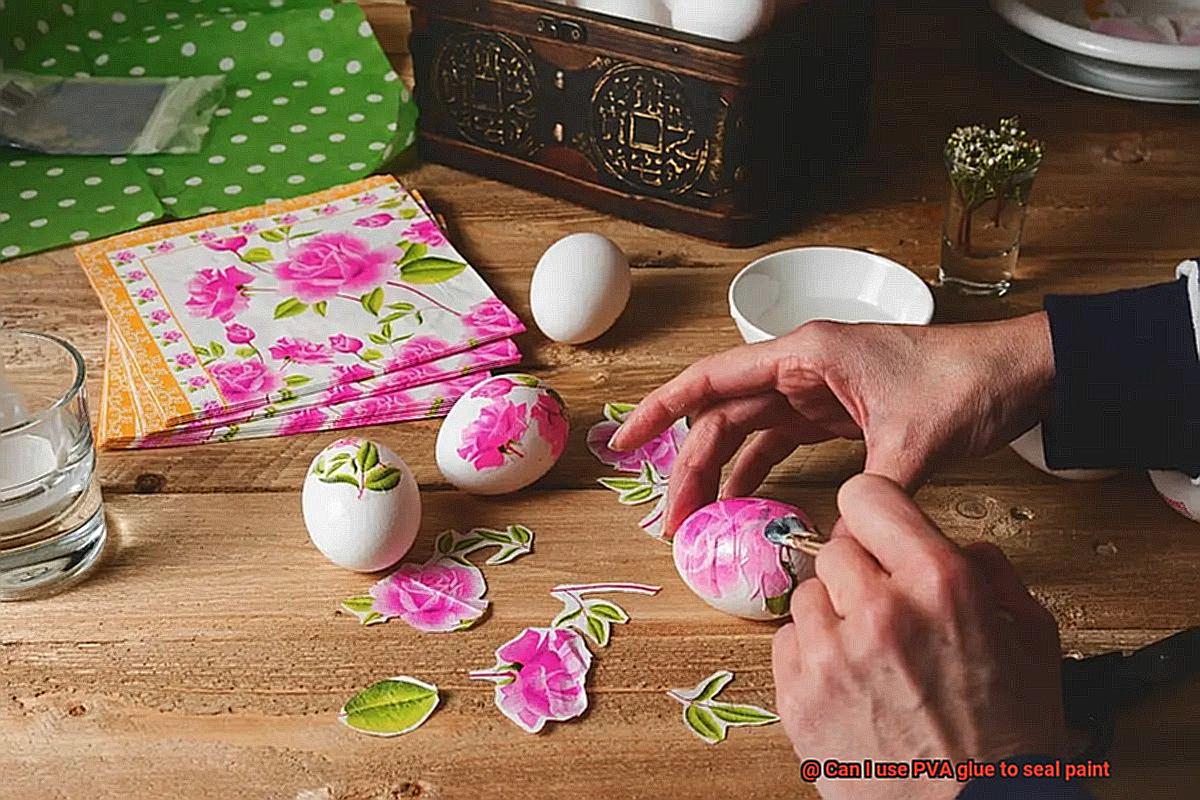
Applying PVA glue as a sealer is simple and straightforward. It can be easily brushed or rolled onto the painted surface, ensuring even coverage. The glue dries clear, leaving behind a smooth and glossy finish that enhances the appearance of the paint.
PVA glue also has excellent adhesion properties. It creates a strong bond between the paint and the surface it is applied to, preventing the paint from peeling or chipping off. This provides a durable and long-lasting finish that can withstand wear and tear.
Another advantage of using PVA glue as a sealer is its ability to offer protection. It forms a protective barrier over the painted surface, shielding it from external factors such as moisture, dust, and UV rays. This helps prevent damage and fading over time, ensuring that the paint retains its original vibrancy.
Furthermore, PVA glue is non-toxic and safe to use. Unlike some sealers that emit harmful fumes or require special ventilation during application, PVA glue is water-based and does not pose any health risks.
Cleanup after using PVA glue as a sealer is hassle-free. Any excess glue can be easily wiped away with a damp cloth or sponge while it is still wet. This makes it convenient for both professional painters and DIY enthusiasts.
Lastly, PVA glue is compatible with various paint types, including acrylics, watercolors, and even some oil-based paints. This versatility makes it a suitable choice for sealing different paint mediums.
Disadvantages of Using PVA Glue as a Sealer
When considering the use of PVA glue as a sealer, it’s important to be aware of its disadvantages. Firstly, PVA glue is not specifically designed for sealing purposes, which means it may not offer the same level of protection and durability as dedicated sealers or varnishes. This is particularly important if you’re looking for a long-lasting finish that can withstand wear and tear.
Another drawback of PVA glue is its water-soluble nature, which makes it vulnerable to moisture. This means that if you’re sealing a surface that may come into contact with water or humidity, such as a bathroom countertop or outdoor furniture, the glue could potentially break down and compromise the seal.
Furthermore, PVA glue may not adhere well to certain surfaces, especially slick or non-porous materials like glass or metal. This can result in a weak bond and an ineffective seal. If you’re working with these types of materials, it’s best to choose a more suitable sealer.
In addition, PVA glue can dry with a slightly cloudy or hazy appearance, which can negatively impact the overall aesthetic of your painted surface, especially on clear or transparent materials. If visual clarity is important to you, it’s worth considering an alternative sealer.
Moreover, PVA glue tends to dry relatively slowly compared to other sealers or varnishes. This can be inconvenient if you’re trying to complete a project quickly. Therefore, if time is of the essence, it might be better to opt for a product with faster drying times.
UV protection is another area where PVA glue falls short. It may not provide adequate protection against UV radiation, which can lead to fading or discoloration of the underlying paint over time. For outdoor applications or areas exposed to direct sunlight, it’s recommended to use a UV-resistant sealer or varnish.
When it comes to resistance, PVA glue has a relatively low tolerance for heat and chemicals compared to other sealers. It may soften, become tacky, or even dissolve when exposed to high temperatures or certain chemicals. This could compromise the integrity of the seal and limit its suitability for certain applications.
Furthermore, if you’re sealing surfaces that will be subject to heavy wear and tear, such as floors or furniture, PVA glue may not hold up well under constant use. It may require frequent reapplication to maintain its effectiveness.
Removing PVA glue can also be challenging. If you later decide to change or remove the sealed paint, it may require scraping or sanding, which could damage the underlying surface. This is something to consider if you value the flexibility of being able to easily remove or replace a sealer.
Lastly, using PVA glue as a sealer may not provide the same professional finish or level of protection as using a dedicated sealer or varnish. While it can certainly get the job done in some cases, it’s important to evaluate the specific requirements of your project and choose the appropriate product for the best results.
Alternatives to PVA Glue for Sealing Paint
When it comes to sealing paint, PVA glue may be the go-to choice for many due to its affordability and adhesive properties. However, there are several alternatives available that offer better performance, durability, and a more professional finish. Let’s delve into these options and explore their unique benefits:
- Mod Podge: If you’re looking for a versatile alternative, Mod Podge is an excellent choice. This water-based sealer, glue, and finish is commonly used in decoupage projects. It leaves behind a smooth and glossy finish on painted surfaces, enhancing the overall appearance while providing protection.
- Clear Acrylic Varnish: Specifically designed to seal and protect painted surfaces, clear acrylic varnish dries to a clear, hard finish. This protective layer prevents the paint from chipping or flaking, ensuring long-lasting durability.
- Polyurethane: For a clear and durable finish that can be applied over paint, polyurethane is an ideal option. With varying finishes like matte, satin, and gloss available, you can choose the perfect look for your project.
- Epoxy Resin: If you’re seeking a more advanced alternative, epoxy resin is the way to go. This crystal-clear resin provides a high-gloss finish that enhances the colors and details of your painting. Often used in art projects, it can be poured onto the painted surface to create a smooth and long-lasting seal.
- Shellac: For those who appreciate traditional options, shellac is derived from the secretions of the lac insect. It dries quickly and leaves behind a beautiful amber-toned finish when applied over paint, providing both protection and aesthetic appeal.
- Wax: When it comes to sealing paint on furniture or decorative items, wax is a popular choice. Furniture wax or paste wax can be applied over the painted surface and buffed to create a soft sheen. Not only does wax seal the paint, but it also adds depth and richness to the color.
- Polyacrylic Sealers: Ideal for sealing paint on surfaces like wood, metal, or concrete, polyacrylic sealers offer a clear and protective finish. Available in various sheens, they can be applied with a brush or sprayer, providing versatility and ease of use.
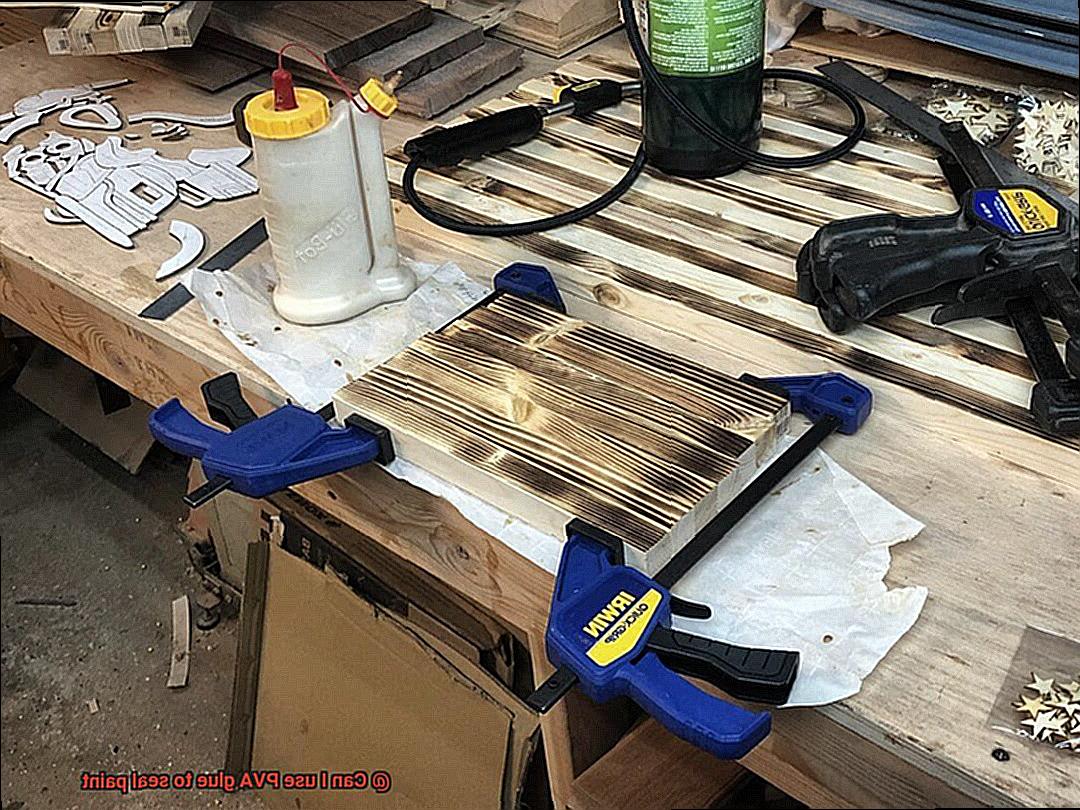
3HU_LhbX7-U” >
Conclusion
Yes, you can absolutely use PVA glue to seal paint. It’s a versatile and effective option for sealing various types of painted surfaces. PVA glue, also known as white glue or wood glue, creates a strong bond and acts as a protective layer over the paint. Its adhesive properties ensure that the paint remains intact and prevents it from peeling or chipping off.
Using PVA glue as a sealer is straightforward. Simply apply a thin and even coat of the glue over the painted surface using a brush or sponge. Make sure to cover the entire area evenly to ensure maximum protection. Allow the glue to dry completely before applying any additional layers of paint or varnish.
One of the advantages of using PVA glue as a sealer is its affordability and accessibility. It is readily available at most craft stores, hardware stores, and online retailers. Additionally, it dries clear, making it suitable for both transparent and opaque paints.
However, it’s important to note that while PVA glue provides adequate protection for indoor projects or items that won’t be exposed to harsh weather conditions, it may not be suitable for outdoor use or areas with high humidity levels. In such cases, consider using specialized sealers designed specifically for outdoor applications.
In conclusion, if you’re looking for an affordable and reliable way to seal your painted surfaces, PVA glue is an excellent choice. Its adhesive properties create a strong bond and protect your paint from damage. Whether you’re working on crafts, DIY projects, or home improvement tasks, using PVA glue as a sealer will help ensure long-lasting results.

